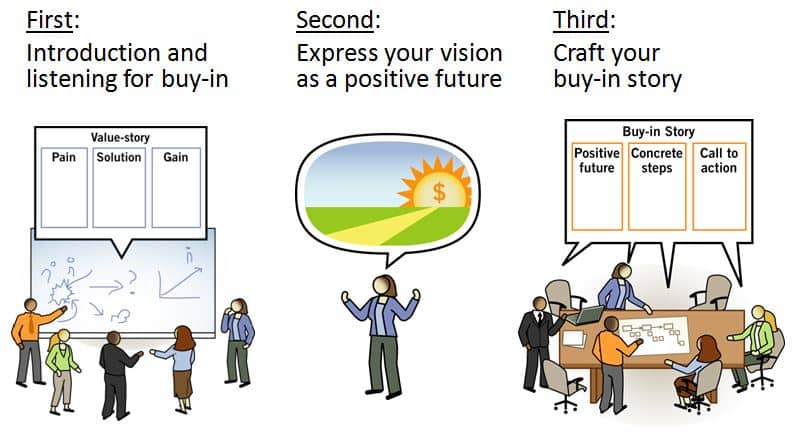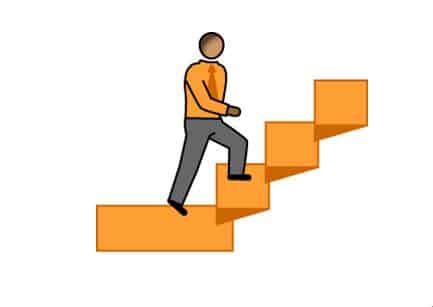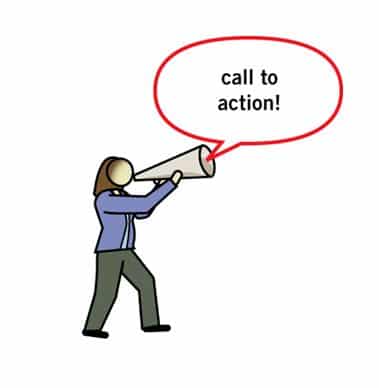How Do You Achieve Buy in to Ensure Results?

Buy-in is the process of gaining people’s understanding, commitment, and action in support of your goals. Without buy-in you are almost certain to fail to drive change in an organization. How do you achieve buy in to ensure results?
How to Get Buy-In for Change
You can’t just dictate results. People will resist and even try to stop your program. After all, without buy-in you have not really convinced anyone that it is in their interest to participate. So, how do we do this?
The goal is to use stories. To craft a story, first listen for pain, then convert that pain into a gain and demonstrate the gain. Now all that is left is to craft your story of the positive future showing them the concrete steps that are needed to that positive future.
Let’s look at each step in more detail.
1. Listen for Pain
Measure the pain in your customer’s world. Identify as many pain points as you hear by talking to them about the situation you want to change.
It’s About Them, Not You
You have to understand the pain the other person is having if you want to get buy-in for change. You might think they would be grateful to you for reliving their pain and just happily go along with your ideas but it just doesn’t work that way.
People don’t know your ideas will work. The pain they are experiencing today might be better than the pain they don’t know about tomorrow with your ideas. So you have to overcome their dissatisfaction with the status quo. If there is no pain or dissatisfaction then there will be no motivation on their end for you to get buy-in for change.
Uncover Unrealized Needs
In sales, this is called uncovering unrealized needs. That means finding pains they did not realize they have. The concepts to get buy-in are similar to selling. But, we are not selling our ideas.
In a customer setting, you are interpreting a customer’s needs, defining a solution, and helping that customer see how your solution is a means to achieving their needs. Therefore, they get behind and work on the action steps in your solution, oriented toward the goal. This is true leadership.
We need to understand their paradigm of how they think. A paradigm acts like a filter. If their paradigm does not fit with your ideas, they don’t hear you. That means that some type of education may be needed.
Benefit of Change
Think of the people in the change situation as your customer…The ones that will benefit from the change are your customers.
Common Pain points include: not making enough money, not having enough time, or work is hard.
2. Convert Pain into Gain
The simplest way to get buy-in and convert a pain into a gain is to take each pain and think of the opposite. The opposite of each pain is the gain.
The gains are the benefits of the solution. Show the improvements in your customer’s world after the change. Convert each pain point into a benefit.
Common Gain points include: making more money, having more time, or working easier.
3. Demonstrate Solution Benefits
You are interpreting customer’s needs, defining a solution, and helping that customer see how your change solution is a means to achieving their needs. Therefore, they get behind and work on the action steps in your change, oriented toward a common goal.
Demonstrate Measurable Benefit to Your Customer
Demonstrating the benefits of the change helps to cement the gains in the customers mind. They have to see it to believe it. Once they believe it then you are one step closer to your goal to get buy-in for change.
Common Benefit points include: use your money to buy or save, use your time for recreation or leisure, or easier work makes the work more enjoyable.
4. Develop a Vision of a Positive Future
You may think that if you want to get buy-in you have to ‘win people over’ to your point of view. No, that’s not it.
Understanding Your Audience
It’s more about you understanding your audience, and finding a path that brings them to the positive future that you want for them, and that will benefit them. In order to get buy-in you must focus on understanding, then leadership. If you build a positive future, they will want to come along to see it.
Examples of Positive Future Visions
Martin Luther King “I have a dream!”
John F. Kennedy “We will put a man on the moon by the end of the decade!”
Have You Walked in Their Shoes?
The make-up of a positive future depends upon your audience’s point of view. Truly understanding them first is the key.
5. Express Your Vision as a Story of the Positive Future
We think in stories, filled with pictures. So, we must design, target and deliver a story that projects a positive future after the change.
It’s a story that your customer will want to hear. It’s a story about the future. Your story needs to include your change goal in terms of your team’s (Customers) needs. Those pain/gain elements we found earlier in steps 1 & 2.
Your story must project a positive future from step 4. And finally, your story must show people why achieving your positive future is beneficial for them, and that will help you get buy-in. Then, you can tell them how they can help you reach a positive future.
Popular Positive Future Stories include the Martin Luther King “I have a dream!” speech. Mr. King explains the details of his vision of the positive future, a future without prejudice, a future of equality. Details of the future must be explained to paint a vivid picture of the future in everyone’s mind.
6. Develop Concrete Steps
Develop a project plan of concrete steps to realizing the positive future. Reason may lead you to conclusions, but emotions get you to take action. Your Intellect drives your understanding, while your Emotions drive your actions. But your employees don’t want promises. Concrete steps have to be real steps that the organization is really taking.
Your concrete steps make up your project plan for realizing the change, delivering the customer benefits, and making a win-win scenario for everyone.
Concrete steps are specific to a vision. Taking a man to the moon meant funding, skills, technical resources, logistics, and various details to be ordered in specific steps.
7. Call to Action
Focus on people to take the first step. Use vivid, real-life examples (worth more than facts or figures). Charts, facts, and figures focus on reason, while people are making decisions based on emotion. Ask for commitment to the first step.
Buy-In Ensures Good Results
The best way to achieve buy-in is to use strategic stories of a positive future. In other words, strategically design, target, and deliver a strategic story that projects a positive future.
It is all about the listener. They need to know what’s in it for them. Address their agendas. Present your goals from their perspective and you are halfway to achieving your goals already.
Only if you empower employees to get involved in the process of improvement can you truly realize the goals and objectives you set. Now you know how to get buy-in!


















Leave a Reply